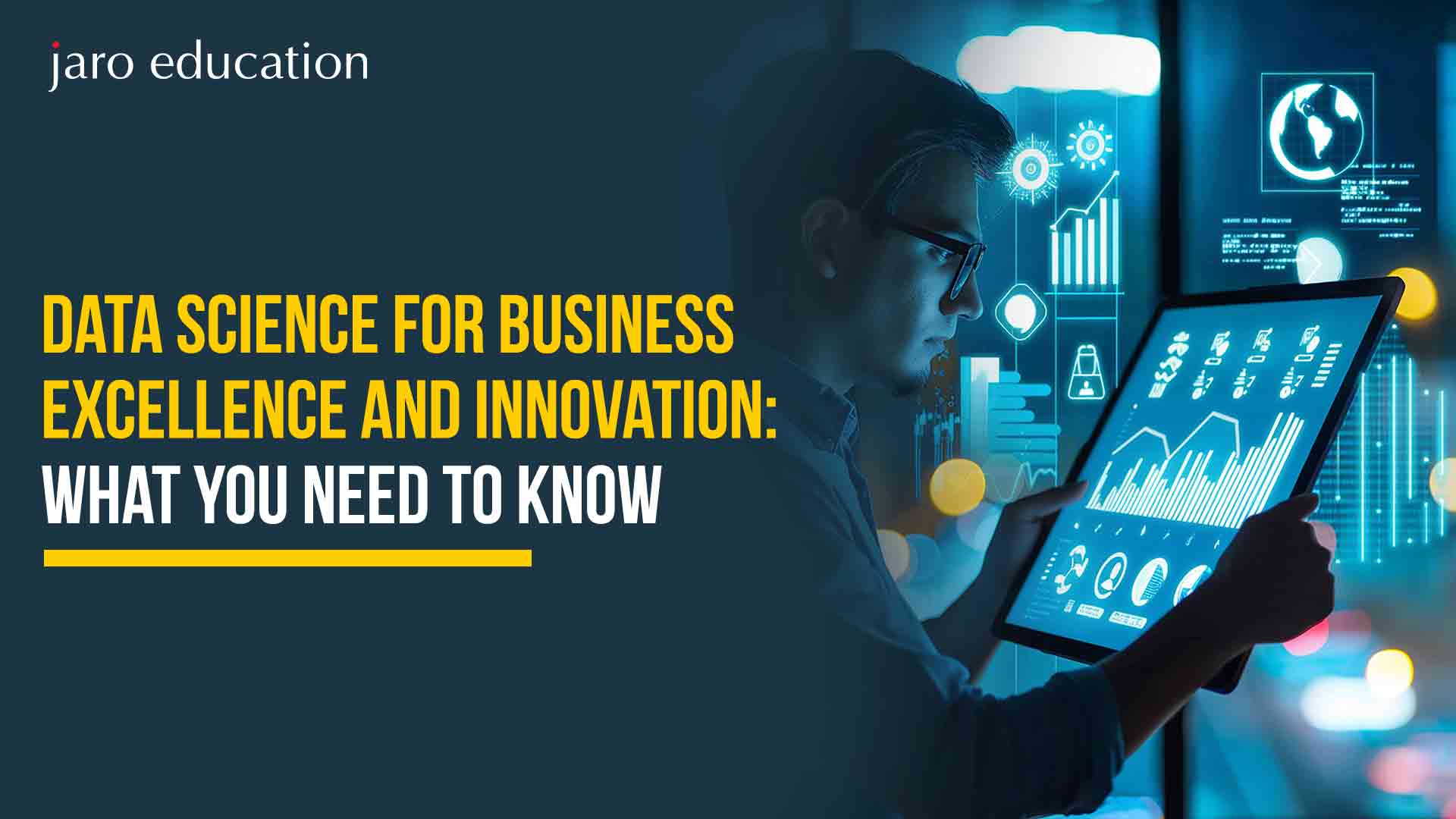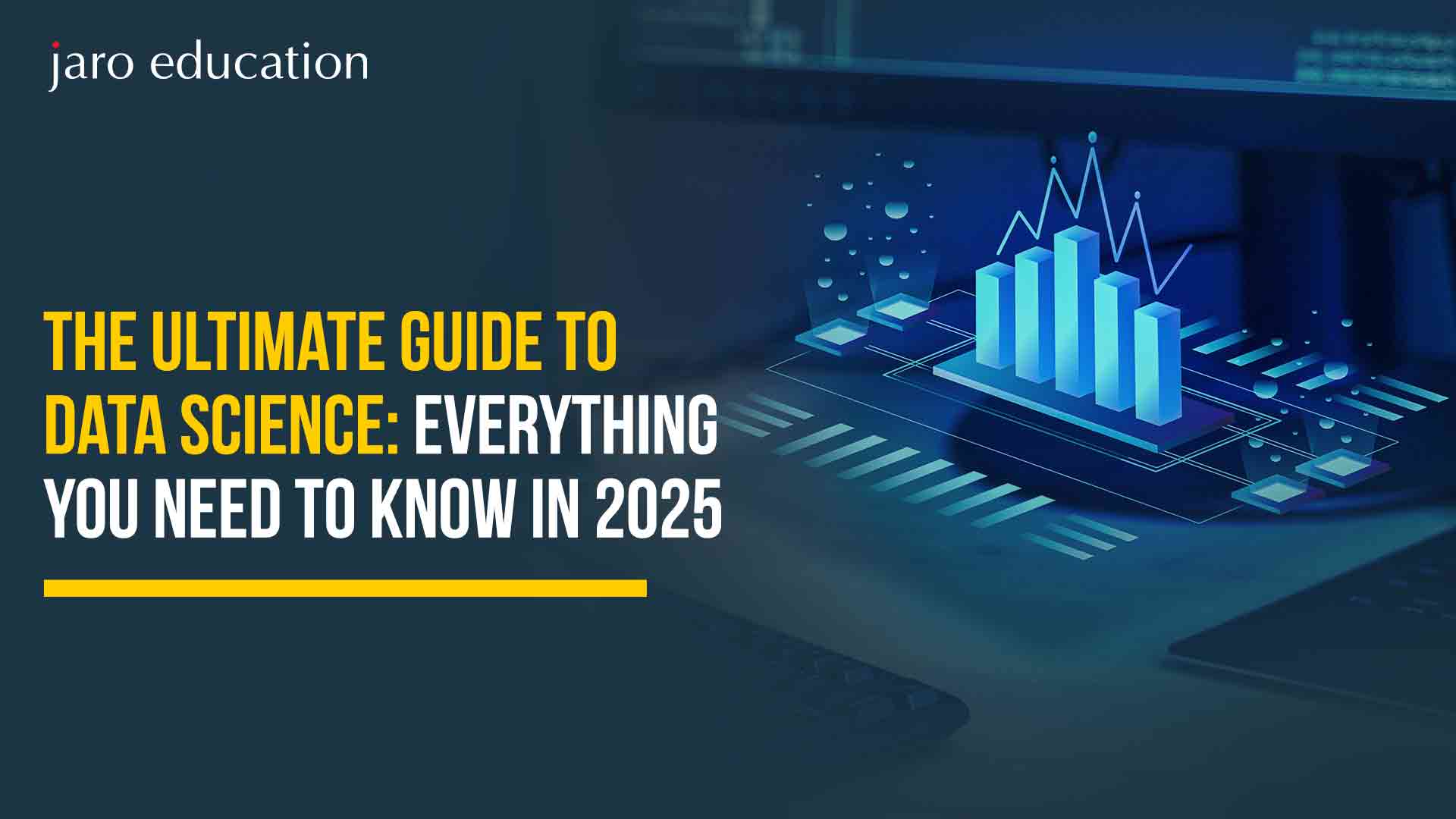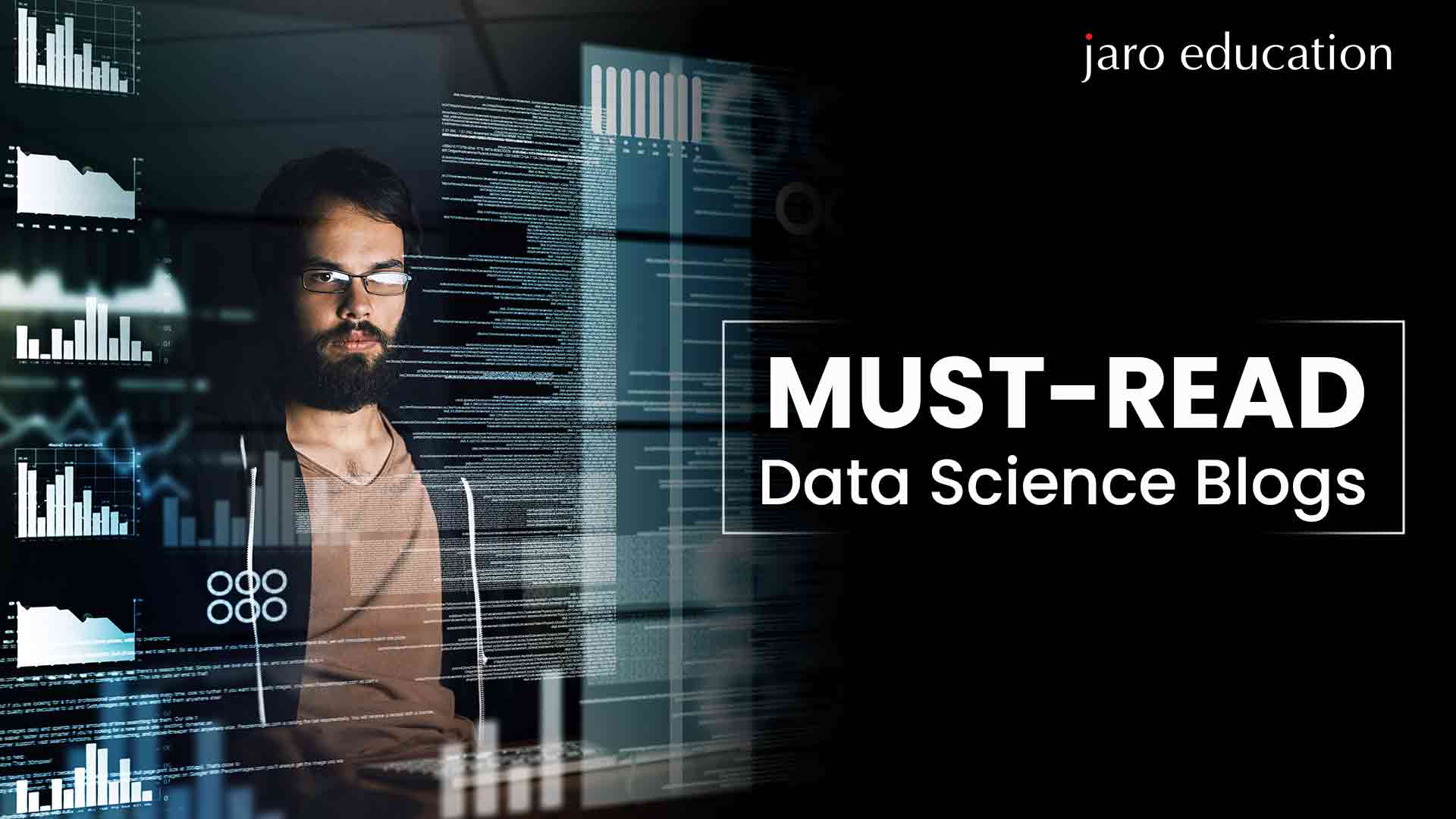What is Data Mining? Phases, Benefits, and Tools
Table of Contents
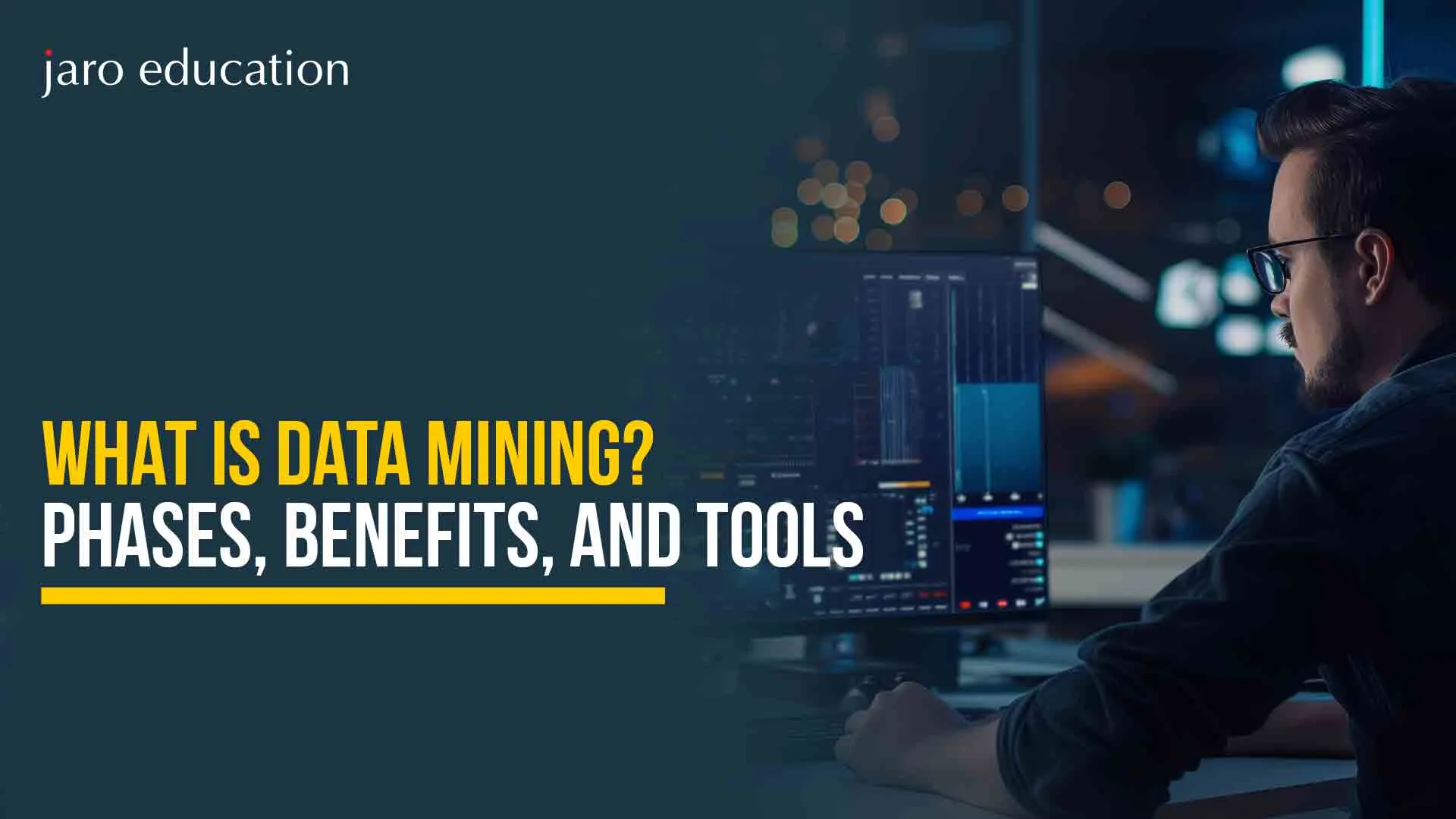
- jaro Education
- 28, April 2024
- 10:00 am
Data mining involves taking the base data to extract useful patterns, trends, or information. This involves adopting a mindset similar to exploring valuable treasures hidden within a pile of digital information. It is used by businesses, scientists, and even governments to enable them to make more intelligent decisions, predict future occurrences, and comprehend human behavior.
In this blog, we are going to see what data mining exactly refers to, how it actually works, and also how it has become essential in the present data-driven society. Are you prepared to find out what goes on behind your favorite app when making its smart suggestions? So let us begin!
What is Data Mining?
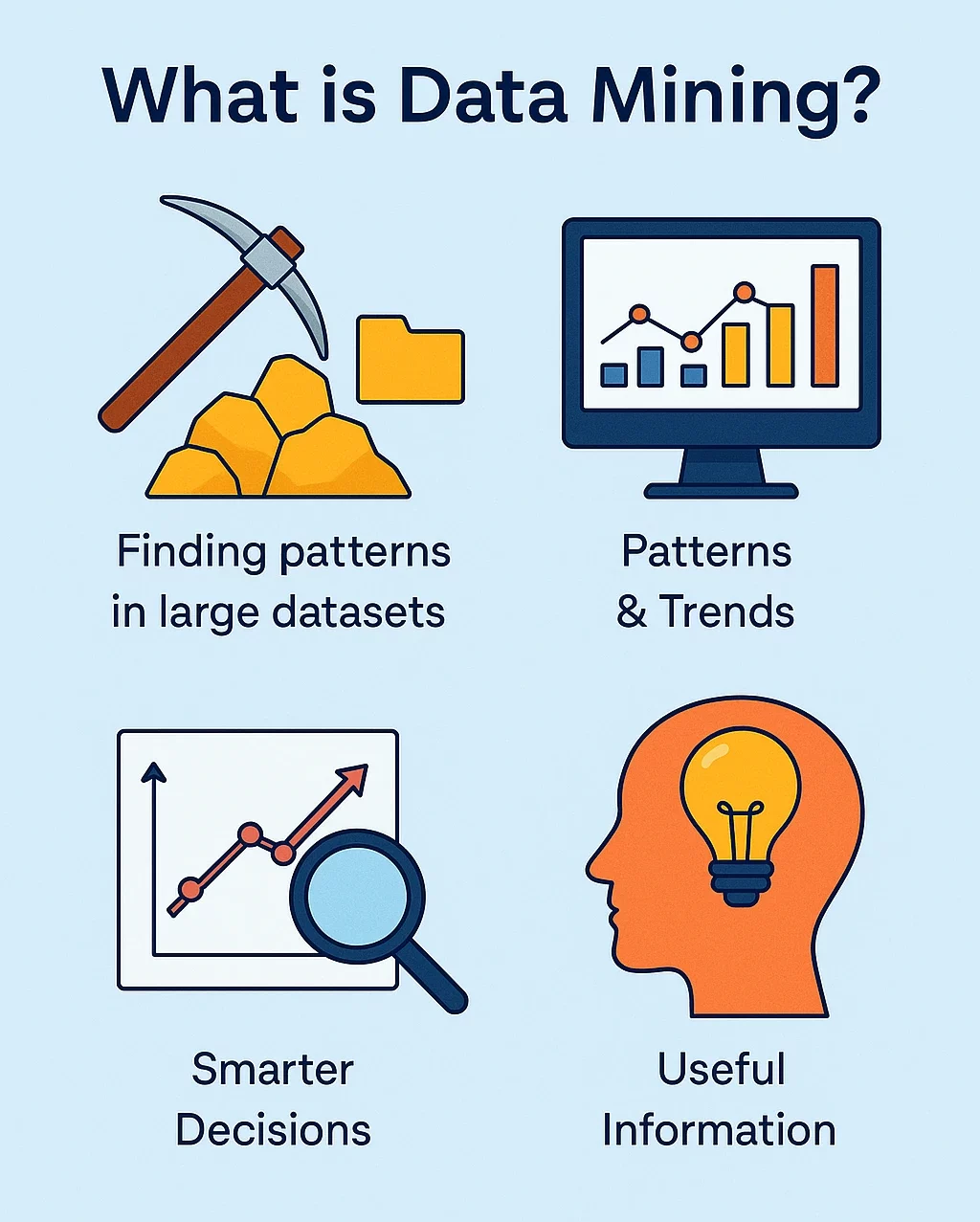
The act of sifting through massive data sets to find links and patterns that may be used to address business problems through data analysis is known as data mining. Most importantly, by utilizing data mining techniques and technologies, many entrepreneurs would be able to forecast future trends and make better-educated business decisions that would ultimately benefit the growth of the business. Effective data collection, warehousing, and processing are certain prerequisites for the data mining process. Discovering more about a user base, predicting results, identifying fraud or security problems, describing a target data collection, and identifying bottlenecks and dependencies are a few critical uses for data mining.
Data Mining - History
Though it may appear modern, the phrase “data mining” really dates back to the 1960s. It first appeared as a notion in the discipline of AI. The objective was to create methods and algorithms that could be used to glean insightful information from massive data volumes.
Researchers started experimenting with various data mining techniques in the 1970s. The invention of the Apriori rule mining algorithm was one significant advancement, as the analysts were able to determine correlations between various variables in a dataset.
Over the next few decades, data mining techniques kept pace with technological advancements. With the development of more potent computers and storage capacity in the 1990s, businesses began to use data mining for commercial purposes. They understood that by examining a ton of consumer data, they might find patterns and trends that would provide them with a competitive advantage.
In the present scenario, data mining is essential to many different businesses, including marketing, banking, and Data mining for healthcare management. Entrepreneurs are now able to analyze complicated information more quickly and accurately than ever before due to the development of data mining techniques and technology.
7 Phases of Data Mining
The entire data mining process consists of four important stages. Let us examine each of these phases in detail:
| Phase | Description |
| 1. Data Cleaning | Removes noise and inconsistent data to improve data quality |
| 2. Data Integration | Combines data from multiple sources into a unified format |
| 3. Data Selection | Selects relevant data for the mining task from the database |
| 4. Data Transformation | Converts data into an appropriate format for mining (e.g., normalization) |
| 5. Data Mining | Applies algorithms to extract patterns and knowledge from the data |
| 6. Pattern Evaluation | Identifies interesting and valid patterns based on some measures |
| 7. Knowledge Presentation | Presents mined knowledge using visual techniques (charts, graphs, reports). |
Top Data Mining Tools You Should Know in 2025
Here are some of the basic tools that help in the process of data mining:

4 major types of data mining tools:
| Type | Purpose | Popular Tools | Example Use Case |
| Classification Tools | Assign items to predefined categories | RapidMiner, SPSS, Orange | Disease diagnosis (Yes/No) |
| Clustering Tools | Group similar data without labels | KNIME, Weka, Apache Mahout | Customer segmentation |
| Association Rule Tools | Discover relationships between variables | SAS Miner, R (arules), Python (MLxtend) | Product recommendation (bread & butter) |
| Regression Tools | Predict continuous values | Python (Sklearn), R, Azure ML Studio | Sales or patient volume forecasting |
- RapidMiner
Ideal: Newcomers to experts in the fields of analytics and machine learning
RapidMiner is an open-source and easy-to-use platform offering the whole process of data mining, including data preparation and modeling, validation, and deployment. It is particularly known to be popular due to its drag-and-drop interface, and it is therefore suitable for non-coders.
- KNIME
Konstanz Information Miner is known as KNIME. Originally launched in 2006, the program adheres to an open-source ideology. With applications in several industries, including banking, health sciences, publishing, and consulting organizations, it has been widely regarded as a leader in machine learning and data science platforms in recent years. It also provides connections that allow data to be moved between environments, both on-premise and in the cloud.
- SAS Enterprise Miner
Most suitable: Data mining purposes and analytics at the enterprise level. SAS Enterprise Miner is part of the SAS ecosystem, offering advanced analytics tools designed to assist specialists handling large amounts of data. It is the default platform for large organizations engaged in high-performance data mining.
- Orange
The open-source data mining purpose for program Orange is based on Python. Both newbies and specialists in data mining will find it to be a very useful tool. Orange provides machine learning techniques for preprocessing, grouping, regression, and other tasks in addition to its data mining features.
- Weka (Waikato Environment Knowledge Analysis)
Best suited: Academic and small-sized projects
The other popular open-source data mining tool also used by researchers is Weka. It provides a library of machine learning algorithms that can be used both directly over data and in custom Java applications.
- Python
Although there are exclusive applications available to help with data mining, one of the most widely used open-source programming languages for data mining is Python. It is a must-have tool for any data analyst. With a wide range of data science applications, it is very flexible and easy to learn. Python has the advantage of allowing you to write scripts from scratch to automate any type of data mining operation.
- Apache Mahout
Most suitable: Researchers and programmers in cognitive-scale machine learning.
Apache Mahout is a distributed machine learning (Scalable) framework that operates on a distributed system such as Hadoop. It is perfect for businesses which operate large data infrastructures.
- IBM SPSS Modeler
Recommended to: Enterprise predictive analytics.
IBM SPSS Modeller is a popular tool due to its extensive experience in performing statistical analysis. It provides a drag-and-drop service and works well in combination with large and small data platforms, as well as different databases.
- AutoML in Google Cloud
It is optimal to use: Automated machine learning in the cloud.
AutoML is a part of Google Cloud Platform and can be used to train powerful models even by people who are less fluent in the field of ML. Google’s robust engineering accelerates this process significantly.
- Microsoft Azure ML Studio
Ideal for: cloud-based machine learning and artificial intelligence
Azure ML Studio serves as a cloud-based platform for collaboratively building, training, and deploying machine learning models. It helps in handling a broad range of data mining activities and is smoothly linked to other Microsoft products.
Best Examples of Data Mining
The application of data mining is not limited to business purposes. There are various industries within the economy where data mining purpose reports have proved to create positive opportunities. Here are some of the basic examples of data mining:
| Example | Industry | Technique Used |
| Amazon Product Recommendations | E-commerce | Association Rule Mining, Collaborative Filtering |
| Fraud Detection in Banks | Finance | Classification, Anomaly Detection |
| Netflix Show Recommendations | Entertainment | Clustering, Predictive Modeling |
| Disease Prediction in Healthcare | Healthcare | Classification, Regression |
- By analyzing the trends, abnormalities, and behaviors, many financial institutions mine data to identify fraudulent transactions. It aids financial analysis, prevents fraud, identifies suspicious activity, and guarantees transaction security.
- In insurance companies, data mining is used to detect fraudulent activities. With the help of proper mining algorithms, suspicious transactions can be easily recognized, and possible fraud situations can be highlighted by examining transactional patterns and client behavior.
- Data mining purpose is utilized in the Data mining for healthcare management sector to analyze clinical trials, medical imaging data, and electronic health records. It supports better treatment regimens, the identification of risk factors, the prediction of illness outcomes, and the detection of possible adverse medication responses.
- To obtain insights into consumer mood, product feedback, and developing trends, mining techniques are used to examine social media data, including tweets, posts, and comments. With the help of this valuable information, companies can predict changes in consumer attitudes and brand impressions.
What are the Benefits of Data Mining
Different companies use various types of data mining techniques to evaluate the data and predict future trends based on the dataset. Other than analyzing the data, data mining purposes can be used to generate numerous opportunities, which include:
- Data mining can be performed in an organization’s new and old systems, making it convenient to analyze the data.
- An analyzed data set makes the job easier for a data analyst to forecast future trends and develop an effective strategy for the business.
- The information generated through data mining is completely based on the knowledge provided by the organization’s employees.
- Compared to other techniques, data mining provides an accurate solution at a minimal cost.
- The most important use of data mining is that it provides a clear understanding of the unpredictable changes in consumer behavior.
- By analyzing the records, the data analyst could easily identify any threats or suspicious activity and accordingly prepare countermeasures to defend against such obstruction.
- In a competitive market, it is important to have an edge over competitors’ business performance. With the help of data mining, the experts could easily identify the trends and patterns and stay ahead in the competitive market.
Thus, Data mining connects data to practical understanding. By utilizing sophisticated algorithms and methodologies, data mining enables companies to optimize their company value and sustain a competitive advantage over rivals.
Upskill with IITM Pravartak: Executive Certification in Advanced Data Science & Gen AI for Managers
Artificial Intelligence, Deep Learning, and advanced Data Science techniques are transforming industries at an extraordinary pace, reshaping how decisions are made and problems are solved. As these technologies permeate domains such as software development, business analytics, scientific computing, and core engineering, professionals across sectors are seeking to upskill and stay relevant in this dynamic landscape. This executive programme is designed to equip managers and mid-career professionals with a deep conceptual understanding and practical grounding in the core principles of AI and Deep Learning.
Programme Highlights:
- Highly recognized Certificate of Completion from IITM Pravartak
- 3 campus immersions (2 days each)
- Industry-specified case studies
- Peer-to-peer learning and mentoring from industry experts
- The live programme is entirely taught by IIT Madras faculty
- Pedagogy filled with case studies, industry projects & practical application
Build a Successful Future with Career Guidance from Jaro Education
Choosing the right career path can feel overwhelming, but you don’t have to figure it out alone. Jaro Education is here to guide you every step of the way. With expert career counselors, personalized guidance, and industry-relevant programs, Jaro helps students and working professionals make smart choices that lead to long-term success. Whether you’re looking to upskill, switch careers, or find the right course, Jaro Education ensures your future is not just planned—but powerful.
Conclusion
Data mining stands as a transformative force, revolutionizing the analysis of vast datasets for governments, corporations, and scholars alike. Its applications span across various industries, such as marketing, healthcare, and education. By uncovering hidden patterns and forecasting trends, data mining empowers businesses to make informed decisions, fostering efficiency and innovation. It uses intricate algorithms and methodologies to unlock valuable insights that are critical to driving success.
Frequently Asked Questions
Data mining is the process of analyzing large sets of data to find hidden patterns, trends, or useful information. It’s like digging through data to discover valuable insights that help in decision-making.
While both involve working with data, data mining focuses on discovering patterns and making predictions, whereas data analysis is more about interpreting existing data to understand what’s happening.
Data mining is used everywhere—from recommending movies on Netflix and detecting fraud in banks to analyzing customer behavior in retail and improving healthcare outcomes.
Not at all! While big companies use it extensively, small businesses, startups, and even individuals use data mining tools to gain insights and make smarter choices.
Not necessarily. There are many user-friendly tools like RapidMiner, KNIME, and Orange that don’t require coding. But knowing programming (like Python or R) can give you more flexibility and power.





